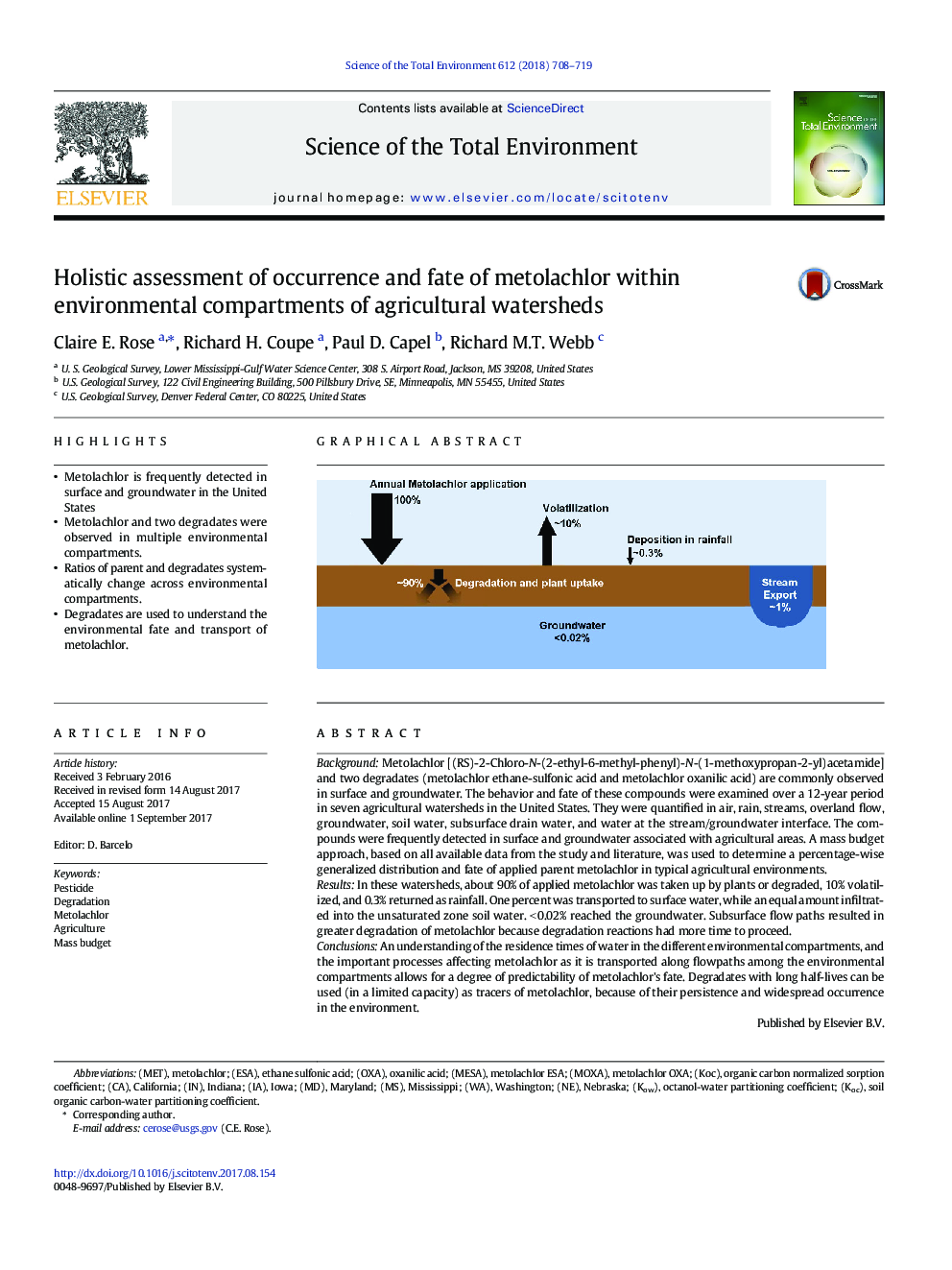| کد مقاله | کد نشریه | سال انتشار | مقاله انگلیسی | نسخه تمام متن |
|---|---|---|---|---|
| 5749926 | 1619691 | 2018 | 12 صفحه PDF | دانلود رایگان |
- Metolachlor is frequently detected in surface and groundwater in the United States
- Metolachlor and two degradates were observed in multiple environmental compartments.
- Ratios of parent and degradates systematically change across environmental compartments.
- Degradates are used to understand the environmental fate and transport of metolachlor.
BackgroundMetolachlor [(RS)-2-Chloro-N-(2-ethyl-6-methyl-phenyl)-N-(1-methoxypropan-2-yl)acetamide] and two degradates (metolachlor ethane-sulfonic acid and metolachlor oxanilic acid) are commonly observed in surface and groundwater. The behavior and fate of these compounds were examined over a 12-year period in seven agricultural watersheds in the United States. They were quantified in air, rain, streams, overland flow, groundwater, soil water, subsurface drain water, and water at the stream/groundwater interface. The compounds were frequently detected in surface and groundwater associated with agricultural areas. A mass budget approach, based on all available data from the study and literature, was used to determine a percentage-wise generalized distribution and fate of applied parent metolachlor in typical agricultural environments.ResultsIn these watersheds, about 90% of applied metolachlor was taken up by plants or degraded, 10% volatilized, and 0.3% returned as rainfall. One percent was transported to surface water, while an equal amount infiltrated into the unsaturated zone soil water. <Â 0.02% reached the groundwater. Subsurface flow paths resulted in greater degradation of metolachlor because degradation reactions had more time to proceed.ConclusionsAn understanding of the residence times of water in the different environmental compartments, and the important processes affecting metolachlor as it is transported along flowpaths among the environmental compartments allows for a degree of predictability of metolachlor's fate. Degradates with long half-lives can be used (in a limited capacity) as tracers of metolachlor, because of their persistence and widespread occurrence in the environment.
64
Journal: Science of The Total Environment - Volume 612, 15 January 2018, Pages 708-719
